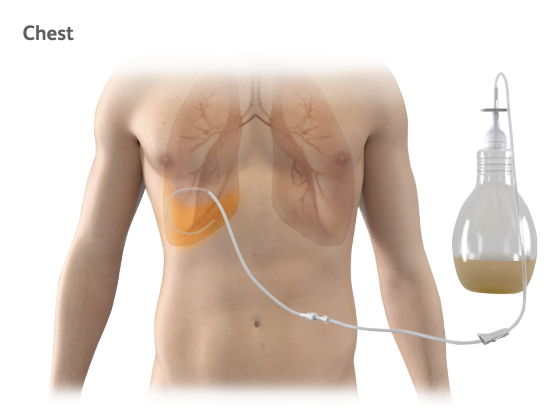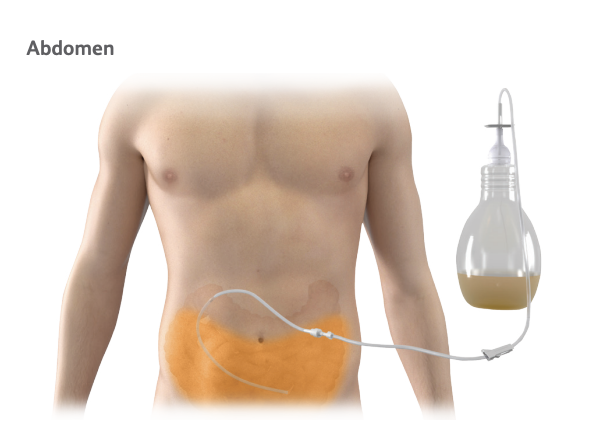Tunneled Drainage Catheter
A tunneled drainage catheter is used when patients have a recurrent accumulation of fluid surrounding the lungs called pleural fluid. A tunneled drainage catheter may also be used to drain fluid in the abdomen, called ascites. This minimally invasive procedure allows patients to drain fluid while at home.
The tunneled drainage catheter system includes a drainage catheter and drainage bottles that collect fluid. The catheter is inserted, typically as a simple outpatient procedure, in the chest for draining pleural effusions (pleural catheter) or in the abdomen for malignant ascites (peritoneal catheter). The end of the catheter stays outside of the body, hidden under a bandage when not in use.
What is the catheter recommended for?
Candidates for tunneled drainage catheter placement often include patients with various types of cancer and diseases, including:
- Advanced Heart failure
- Cancer
- Chylothorax
- Liver disease
Patients with these conditions often experience an accumulation of excess pleural fluid around one or both lungs. As a result, the lungs are unable to expand all the way, making it difficult to breathe. Other symptoms may include:
- Chest pain
- Cough
- Inability to lie flat
In addition, cancer patients may experience ascites, or fluid accumulation in the abdomen. In these cases, a tunneled drainage catheter may be used to relieve pain, breathing challenges, and a feeling of fullness in the abdomen.
How does the peritoneal catheter work?
This system lets you drain fluid at home and on your own schedule, so you can manage fluid buildup before it becomes even more uncomfortable. For most patients, drainage takes approximately five to 15 minutes. You drain fluid on your schedule, without needing to visit the doctor when your fluid builds up. The drainage system is a safe, proven option that has provided relief to over 300,000 patients since 1997.
Post Tunneled Drainage Catheter
Most patients can return home the same day of their procedure. Before being released, your medical team will provide instructions on how to care for the tunneled drainage catheter, including how to empty the drainage bottle. Your doctor will also give you information on identifying signs of complications, such as difficulty breathing or discomfort.
The above information is not all inclusive of the risks, alternatives and benefits. It is not meant to be a substitute for informed discussion between you and your doctor, but can act as a starting point for such a discussion. There are complications possible with any medical procedure. Overall, minimally invasive procedures have a lower complication rate than open surgeries.






